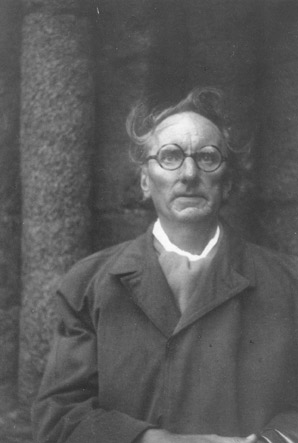Rued Langgaard (1893-1952)
Vanvidsfantasi, per pianoforte, CBVN 21 (1907)
Tranquillo
Berit Johansen Tance, pianoforte.
Gitanjali Hymns, per pianoforte, CBVN 149 (1918)
1. Din Musiks Glands
2. Himlen sukker
3. Den fjerne Sang
4. Sejlfærd
5. Sommerhvisken
6. Himmel-Ensomhed
7. Den hvileløse Vind
8. Tavshedens Hav
9. Regnfulde Blade
10. Gyldne Strømme
Berit Johansen Tance, pianoforte.
Endens Tid (Il tempo della fine), Pezzo da concerto per soli, coro e orchestra dall'opera Antikrist (testo dell'Autore) (BVN 243) (1921/1923 e 1939/1940) -- Nina Pavlovski, soprano; Stig Andersen, tenore; Per Høyer, baritono --- Coro della Radio Nazionale Danese diretto da Frans Rasmussen; Orchestra Sinfonica Nazionale della Radio Danese diretta da Gennady Rozhdestvensky --
I. Anticristo. Preludio
II. Alla fine del tempo
III. Verso la fine del mondo
IV. La catastrofe
Vanvidsfantasi, per pianoforte, CBVN 327 (1947/1949).
1. Vanvidsefteraarsnat
2. Efteraarsengel
3. Vanvidsgang
Berit Johansen Tance, pianoforte.
Interdikt, poema sinfonico per organo e orchestra (BVN 335) (1947/1948) -- Per Salo, organo - Orchestra Sinfonica Nazionale della Radio Danese diretta da Gennady Rozhdestvensky
Hél-Sfærernes Musik, per pianoforte, CBVN 371 (1948).
Efterhaanden vanvittigt Tempo
Berit Johansen Tance, pianoforte.
Fanfara per orchestra
Danemarks Radio, fanfara per orchestra, BVN 351 (1948).
Danish National Symphony Orchestra diretta da Thomas Dausgaard.
Res absurda, per coro e orchestra, BVN 354 (1948).
Danish National Choir
Danish National Symphony Orchestra diretti da Thomas Dausgaard.
Carl Nielsen, vor store Komponist (Carl Nielsen, il nostro grande compositore), per coro e orchestra su testo dell'Autore (realizzazione di Bo Andersen) (BVN 355) (1948) -- Daish National Radio Choir diretto da Frans Rasmussen e Danish National Radio Symphony Orchestra diretta da Gennady Rozhdestvensky.
 |
| English: Danish composer Rued Langgaard (1893-1952). (Photo credit: Wikipedia) |
Rued Langgaard - Symphony No. 1 "Pastorals Of The Rocks" (1911)
Conducted by Leif Segerstam with the Danish National Radio Symphony Orchestra.
I. Surf and Glimpses of the Sun - Maestoso - 00:00
II. Mountain Flowers - Lento - 23:12
III. Legend - Lento Misterioso - 35:07
IV. Mountain Ascent - Andante E Con Espressione - 40:53
V. Courage - Maestoso Allargando - 47:07
Langgaard was only 14 when he began composing his first symphony in the spring of 1908. He had just had his 'officiaI' debut in Copenhagen with Musee triumphantes, a choral work which was not too well received by the newspaper critics. ln November 1908 the young composer presented the first four of the five movements of the symphony at a private concert where he played the music on the piano 'freely from the orchestral scores' as the programme states. The fnale was composed in 1909, but the symphony was revised a number of times up to 1911 when it received its final form. The composer was at that time I7 years old. Contrary to what happened to many of his compositions Langgaard never revised or shortened the score for his first symphony after completion. Also the titles ol the individual movements are original, however the title 'Klippepastoraler' (`Rock Pastorals`) is of much later date (the 1940s),
Copenhagen musical life was not particularly open-mlnded at the beginning of the 20th Century and it proved impossible to have the symphony performed in Denmark. No Danish composer had at that time and has hardly ever since — created such a demanding one-hour-symphony. However, Langgaard paid yearly visits to Berlin in those years. and he had the chance to show the score to conductors such as Arthur Nikisch and Max Fiedler. Both expressed their warmest appreciation. and the support of various patrons of music enabled Langgaard to engage the Berlin Philharmonic Orchestra (expanded to 102 musicians) under the direction of Max Fiedler for a concert in Berlin. It took place on 10 April 1913 in the Philharmonic concert hall and included Symphony No. 1 as well as two other first performances: the Preludfo Patetico (1913) for organ, played by the 19-year-old composer himself, and Sphinx. an orchestral piece (1909- 13). The young Dane was greatly admired and the reception was exuberant. The following lines from Dre Post are a case in point:
"Quite apart from the fact that Rued Langgaard's technique reveals amazmg maturity and skill something even more important appears in his thematic maturity in his development of ideas — namely an exceptional creative primordial force which moreover is thoroughly healthy."
After the successful performance Langgaard worked for a Copenhagen performance — but in vain. Only 15 years later. when Langgaard on 11 April 1928 put his symphony on the progamme in a musical society established by himself. did the Danish audience get a chance to hear it. However. the composition was received as a curiosity Its third performance took place in 1984 by the Danish National Radio Symphony Orchestra under Frank Shipway.
The symphony is composed in the romantic tradition of the five-movement programme symphony rooted in Beethoven's Pastoral Symphony and the Syrnphonie Fantastique by Berlioz. The programme is the spiritual journey of the human soul symbolised by an ascent from the surfs at the foot of the cliff to the top of the mountain where lresh air and a wide view fill the heart with new courage, The initial motif heard at the beginning ofthe symphony is repeated at the beginning of the finale and in the tina! apotheosis of the symphony (in which seven extra brass players join in) the main theme of the first movement interweaves. In the present recording for the first time — Langgaard's directions as regards the brass section are followed strictly. - Chandos










